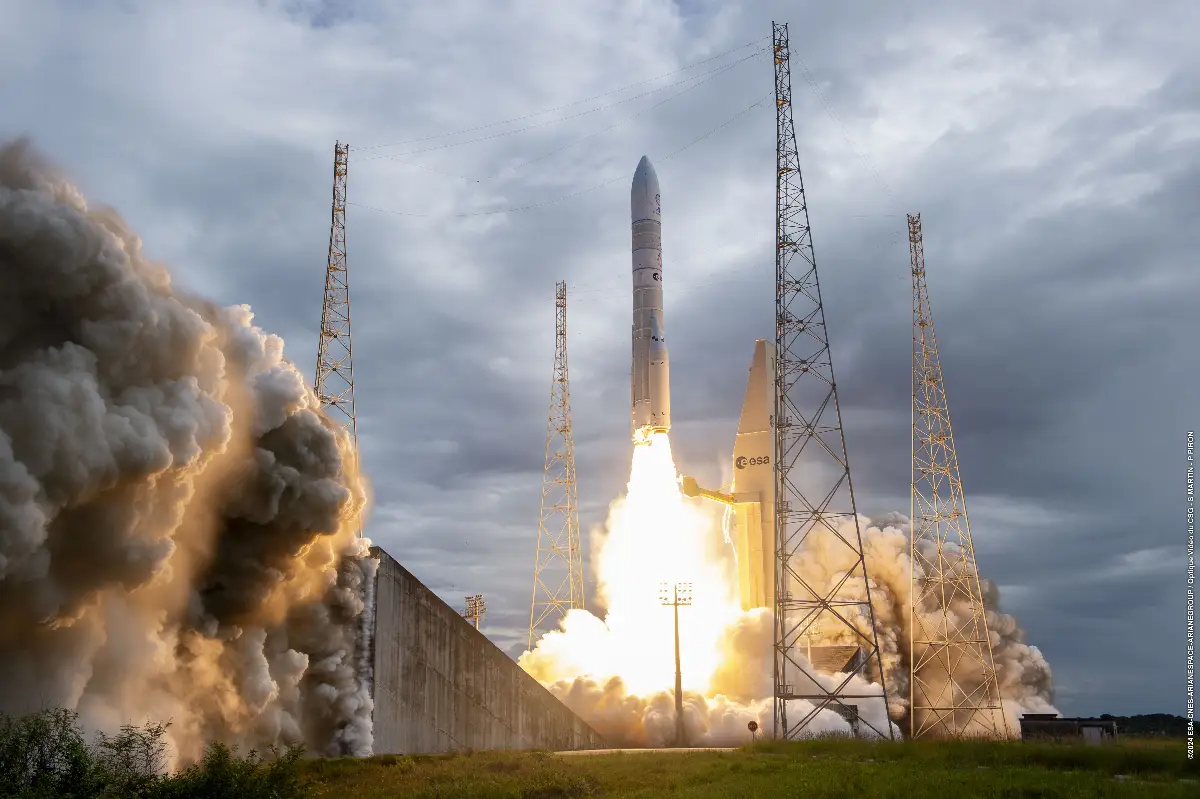
Ariane 6 (2): Europe's new rocket powers into space
The next one is planned for launch this year on its first commercial flight

Europe's new heavy-lift rocket, Ariane 6, made its inaugural flight from Europe's Spaceport in French Guiana at 16:00 local time on 9 July (+4 20:00 time BST, +5 21:00 time CEST).
It is the latest in Europe's Ariane rocket series, taking over from Ariane 5, and featuring a modular and versatile design that can launch missions from low-Earth orbit and farther out into deep space.
This inaugural flight, designated VA262, is a demonstration flight whose aim is to show the capabilities and prowess of Ariane 6 in escaping Earth's gravity and operating in space. Nevertheless, it had several passengers on board.
At 21:06 BST, 22:06 CEST, one hour after liftoff, the first set of satellites on board were released from the upper stage and placed into an orbit 600 km above Earth. Satellites and experiments from various space agencies, companies, research institutes, universities and young professionals were included on this inaugural flight.
In addition to the rocket, the liftoff demonstrated the functioning of the launch pad and operations on the ground at Europe's Spaceport. The new custom-built dedicated launch zone was built by France's space agency CNES and allows for a faster turnover of Ariane launches.
Next: tech demos, controlled deorbit and capsule separation
With the placement of satellites into orbit, Ariane 6 has demonstrated that it can successfully launch its payloads into space, but ground control has more in store for its inaugural flight. Over the next hour, its upper stage will show again that it can restart its Vinci engine using the novel auxiliary propulsion unit. This restart capability will allow it to drop off multiple passengers into different orbits on future flights and deorbit itself through Earth’s atmosphere at the end of its mission, to ensure it does not become space debris.
On this flight its upper stage is set to release two reentry capsules as it enters Earth's atmosphere for a clean disposal to burn up harmlessly, leaving no space debris in orbit.
The next Ariane 6 is planned for launch this year on its first commercial flight under Arianespace as operator and launch service provider.
See for details AVIONEWS.
AVIONEWS - World Aeronautical Press Agency